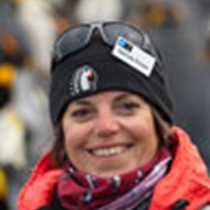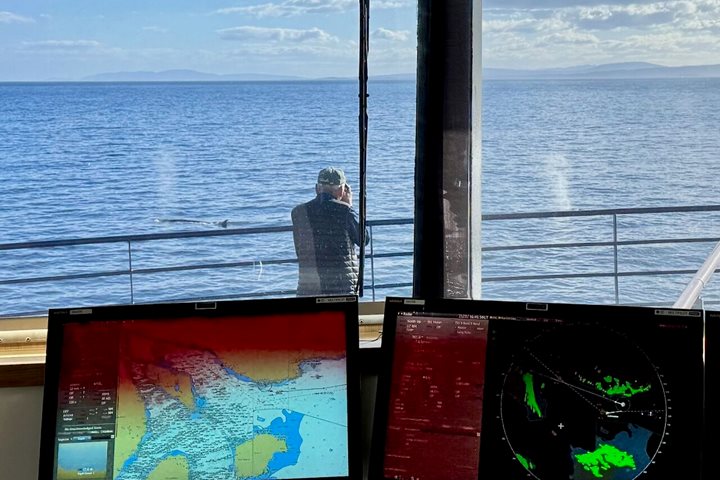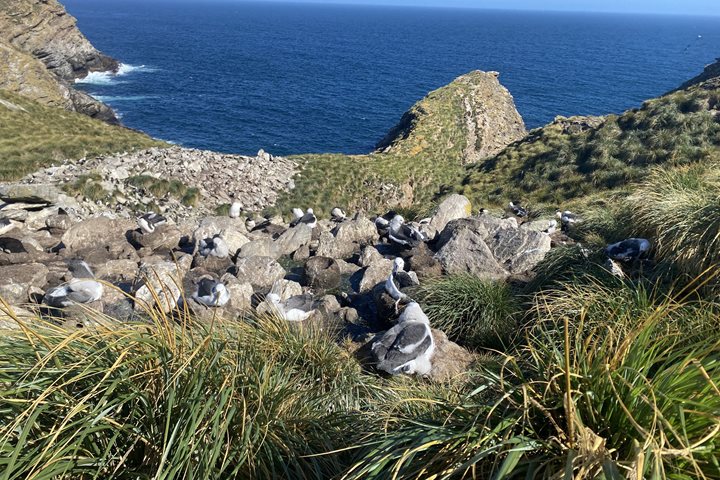After assessing the weather charts, Captain Martin Graser prepared his ship for the rough seas expected for the crossing between the Falkland Islands to Ushuaia. With characteristic professionalism and friendly manner, he reassured us he would do his best to hug the southern coast of the islands with National Geographic Orion so as to minimize our time in the rougher seas. He had a plan, he knew his ship well and he trusted his officers and crew. And so we did too.
The ship sailed against the prevailing forces of the Mar Argentino. The shallow seabed formed innumerable big waves that, combined with sustained 35 knots of wind generated an uneven motion inside the ship. From the bridge, it was terrific to see the bow of the ship plunging into the waves while a gigantic splash of water covered every deck.
Moving around the ship was an interesting affair: some felt that compulsory dancing lessons had been imposed on us and we all admired the resilience of the crew who welcomed us to breakfast with a gentle smile.
‘I can see land’, said Ray from the bar early in the afternoon. The shape of Isla de los Estados was a pleasant surprise to all as we knew we had been through the worst of the storm. ‘Staten Island’ was discovered and named by Dutch navigators in 1615, and lies 18 miles away from the easternmost coast of Tierra del Fuego. Isla de los Estados is an Argentine island with plenty of history: the lighthouse built here in 1884 inspired French writer Julius Verne’s novel ‘The lighthouse at the end of the world’, the penal colony established here in 1890s moved to Ushuaia because it was extremely difficult to get to this isolated land, and subsequent stories of pirates and shipwrecks contribute to the enigmatic attraction of this land. Today, its rugged interior and indented coastline is protected and managed by the Government of Tierra del Fuego as an ‘Ecological, historic and tourist Provincial Reserve’.
A collection of the best and most memorable photographs of this voyage was put together with the collaboration of everyone on board. Watching these on the screen brings us laughter, good memories and great satisfaction for what we have achieved. We are near the end of this voyage, it is time to pack and say goodbye to old mates and new friends. Sir Ernest Shackleton (1919) once said ‘for a sailor, his ship is more than a floating home….’. It’s true, and we departed in the knowledge the National Geographic Orion and its crew will be ready to welcome us once again whenever we decide to return to this wonderful vessel.







